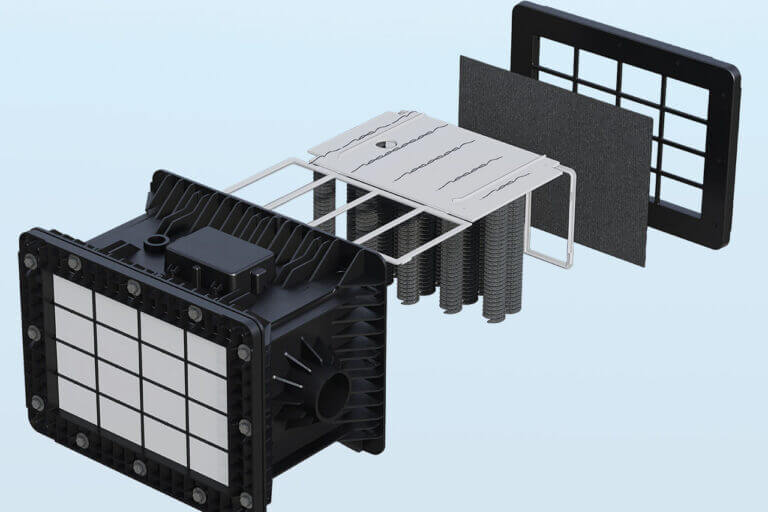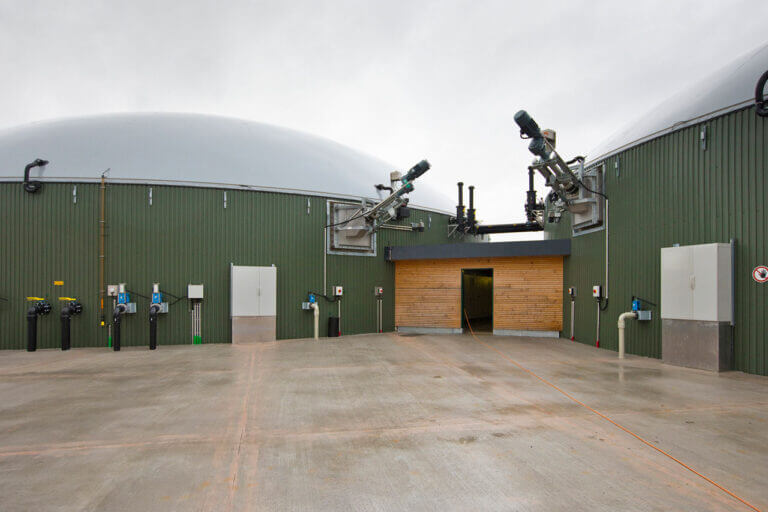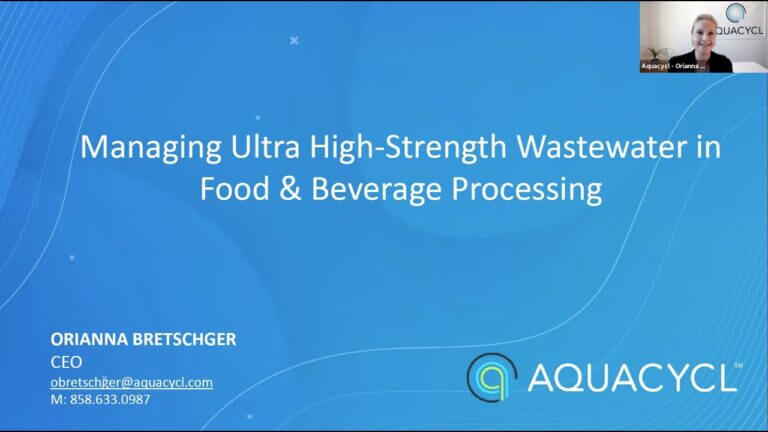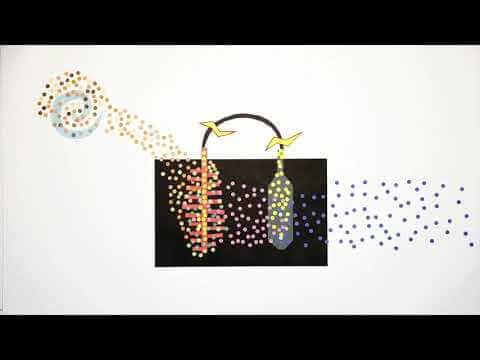From agriculture to industry and everyday household use, wastewater generation is a reality of human life. Wastewater has traditionally been thought of as a negative externality. At best, it requires energy intensive processes to remove pollutants before being discharged. At worst, companies and municipalities discharge it without adequate treatment or agricultural runoff leads to a host of downstream consequences for the environment and human populations alike.
Multi-benefit approaches to water treatment offer businesses a unique opportunity to create a “stacked win” when it comes to dealing with the wastewater generated by their production activities. Water (and wastewater) is something that is worth solving in and of itself, but the reality is that it is undervalued and underpriced. Cost is not the same as value, and most companies don’t price water (and wastewater) at it’s true value, which leads to overuse and underinvestment in infrastructure and technologies to improve water management. By recognizing the multitude of benefits that come from improving the way we manage water, companies can improve the cost/benefit equation and make the case for taking action.
The reality is that companies manage to the bottom line, and every investment will require a financial justification. However, we cannot afford to wait until water related investments have the highest projected ROI. They must be viewed holistically in terms of societal, environmental and economic value.
What is a stacked win in wastewater?
Conceptually, a ‘stacked win’ in wastewater is a treatment process outcome that results in multiple positive benefits not just to the company, but also the local community and ecosystem as a whole.
A stacked win should have a “ripple effect” that extends far beyond short term benefits, such as a net reduction in clean water consumption within the basin that saves companies and individuals money, and reduces the carbon impact associated with treating, transporting or pumping wastewater to a nearby facility.
Another great example of a stacked-win is implementing “greenprints”, using treated wastewater to restore natural habitats, sequester carbon, and provide outdoor recreation opportunities for nearby communities.
The Pacific Institute, among others, refers to this type of wastewater treatment methodology as falling within the ‘multi-benefit approach for water management,’ which can encompass both private enterprise solutions and public works designed to improve water management across all areas, including wastewater treatment.
What are the Stacked Wins of Proper Wastewater Management?
The first, and most obvious, are the business benefits. Improvements to wastewater management generally involve installing or upgrading onsite treatment systems, increasing onsite reuse of wastewater, and collaboration with nearby stakeholders and entities when it comes to creative, win-win ways of utilizing the wastewater elsewhere in the basin.
Reduced costs
Depending on the situation, there could be reduced costs for wastewater producers, especially in the case where the company is paying high surcharges, fines or trucking and disposal costs. In addition to reduced fees and direct costs, modernized onsite wastewater treatment systems can reduce costs associated with energy, chemical consumption and labor.
Reduced risk of non-compliance and production disruption
As local utilities and regulatory bodies increase the wastewater compliance requirements, companies will become more financially liable for the downstream effects of their wastewater production.
This can mean the addition of fees for wastewater generation in areas without prior regulation, or increasing wastewater compliance fees as existing regulations get tighter. Implementing better wastewater treatment systems now means getting ahead of the compliance curve when it comes to future regulations while reaping the additional stacked-win benefits immediately.
The extreme result of non-compliance is the case where your utility doesn’t allow you to discharge wastewater, which could lead to production shutdowns and revenue loss. In the case of water scarce areas, water use (and the perception of use) is important to manage, as this directly impacts production.
Reduced fresh water consumption
As the quality of your wastewater stream improves, you can re-use the wastewater for secondary onsite needs that would originally require additional freshwater. Examples include use in cooling systems or even using the wastewater for cleaning vehicles, exteriors, and onsite irrigation in your facility.
In water scarce areas, this provides an added community and ecological benefit of increased water availability for other stakeholders. This means less biodiversity loss and negative impacts from over-consumption in the basin, as well as (potentially) improved livelihoods as it eases some of the water stress. Similarly, if other users of freshwater can shift to using treated wastewater for their needs, such as in the case of agricultural use of wastewater, the freshwater savings will compound.
Collectively, this onsite and offsite reuse of treated wastewater can play a major role in improving water security.
The Environmental Impact of Proper Wastewater Management
Proper wastewater management improves the local basin level outcomes and global community in multiple ways. The results of proper management are far-reaching with the stacked wins extending further than just your immediate business.
Impact on water quality
Water quality is often the overlooked dimension in corporate water strategies. Companies have clear targets around water use and replenish, but quality usually doesn’t make it into ESG reports. The reality is that while scarcity makes the headlines and is arguably a bigger business risk, 80% of wastewater is discharged with minimal to no treatment. This can have devastating impacts on downstream communities and ecosystems, ranging from human health, biodiversity loss, and economic growth. By maintaining or improving water quality from the facility, companies help to address this massive global challenge.
Impact on climate
Proper wastewater treatment plays a key role in reducing the greenhouse gas (GHG) emissions that drive climate change. Untreated wastewater releases substantial GHG into the atmosphere as the organic materials break down into methane, a greenhouse gas 84 times as potent as CO2. Add this to the fact that the water and wastewater sector requires large amounts of energy to move and treat water, equivalent in GHG emissions to the entire shipping industry. And we are only treating 20% of wastewater globally.
Innovations in treatment technologies such as Aquacycl’s BETT reduce 90% of GHG emissions from wastewater treatment compared to alternative technologies. Other technologies which can be used to reduce GHG emissions are anaerobic digesters, which capture and burn methane from the treatment process. By harnessing the energy inherent in wastewater, it helps to reduce the need for fossil fuel derived energy sources.
Impact on oceans
Wastewater ultimately ends up in the ocean. High-nutrient wastewater runoff results in harmful algal blooms (HABs) which deplete the oxygen from the water, creating dead zones. Furthermore, organic pollutants also end up in the water basin, and ultimately, the ocean. Effective wastewater systems improve ocean health by addressing these areas through a variety of treatment protocols.
How to Incorporate Better Wastewater Practices
Two main principles of better wastewater practices involve incorporating the circular economy and a multi-stakeholder approach.
Circular Economy
The circular economy of water is an approach that sees wastewater as a resource within a system as opposed to an externality. Achieving circularity of water requires treatment approaches to improve wastewater quality and secondary uses of water that keep it within a theoretically closed loop. In a perfect system, every molecule of water would be reused within the system. While complete circularity can be impractical for various reasons, any gains towards a circular water economy provide substantial benefits.
Multi-stakeholder approach
A multi-stakeholder approach is required to truly accomplish stacked wins with wastewater management. This requires all stakeholders to have a role in shaping the water treatment cycle within a basin, including firms that produce wastewater, those who utilize wastewater, and the nearby local population within the water basin.
The future of wastewater management
With commitments to zero-liquid discharge and becoming net water positive within manufacturing facilities on the horizon, your company needs to avail itself of all available means towards implementing sustainable wastewater treatment solutions to achieve stacked-wins.
This includes creative onsite wastewater reuse, multi-stakeholder approaches to improving basin-level outcomes, and implementing innovative technologies to improve the efficiency of onsite treatment.
To find out how Aquacycl’s BETT technology can play a pivotal role in helping your facility lead the way when it comes to wastewater treatment, contact us today.











